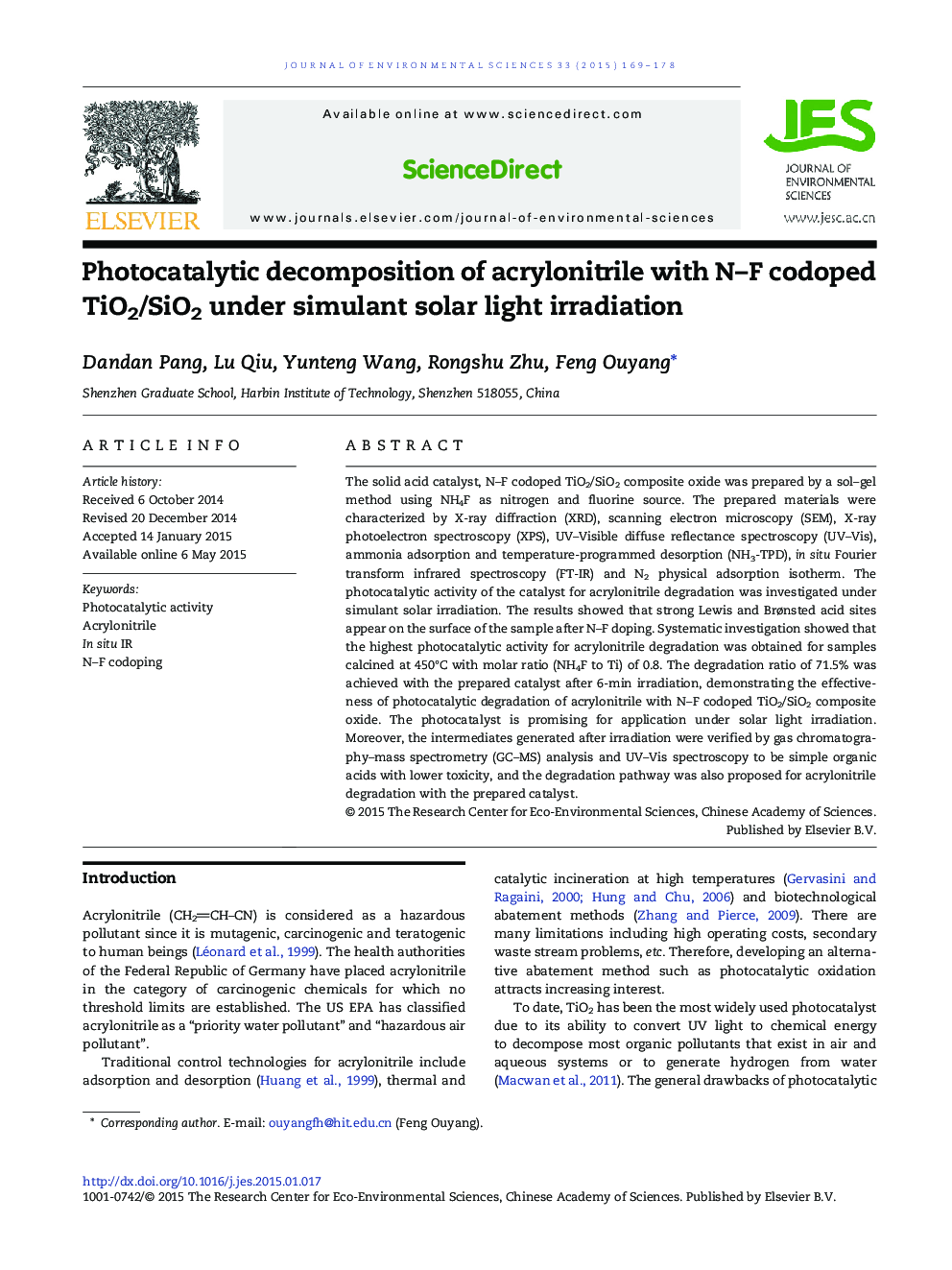| کد مقاله | کد نشریه | سال انتشار | مقاله انگلیسی | نسخه تمام متن |
|---|---|---|---|---|
| 4453989 | 1620820 | 2015 | 10 صفحه PDF | دانلود رایگان |

The solid acid catalyst, N–F codoped TiO2/SiO2 composite oxide was prepared by a sol–gel method using NH4F as nitrogen and fluorine source. The prepared materials were characterized by X-ray diffraction (XRD), scanning electron microscopy (SEM), X-ray photoelectron spectroscopy (XPS), UV–Visible diffuse reflectance spectroscopy (UV–Vis), ammonia adsorption and temperature-programmed desorption (NH3-TPD), in situ Fourier transform infrared spectroscopy (FT-IR) and N2 physical adsorption isotherm. The photocatalytic activity of the catalyst for acrylonitrile degradation was investigated under simulant solar irradiation. The results showed that strong Lewis and Brønsted acid sites appear on the surface of the sample after N–F doping. Systematic investigation showed that the highest photocatalytic activity for acrylonitrile degradation was obtained for samples calcined at 450°C with molar ratio (NH4F to Ti) of 0.8. The degradation ratio of 71.5% was achieved with the prepared catalyst after 6-min irradiation, demonstrating the effectiveness of photocatalytic degradation of acrylonitrile with N–F codoped TiO2/SiO2 composite oxide. The photocatalyst is promising for application under solar light irradiation. Moreover, the intermediates generated after irradiation were verified by gas chromatography–mass spectrometry (GC–MS) analysis and UV–Vis spectroscopy to be simple organic acids with lower toxicity, and the degradation pathway was also proposed for acrylonitrile degradation with the prepared catalyst.
The Lewis acid sites are strong adsorption centers and can accept electron pairs. Acrylonitrile (AN) with lone-pair electron can be easily adsorbed onto the Lewis acid sites and oxidized by OH. The Bronsted acid sites can donate protons (H +) and generated OOH with powerful oxidation.Figure optionsDownload as PowerPoint slide
Journal: Journal of Environmental Sciences - Volume 33, 1 July 2015, Pages 169–178